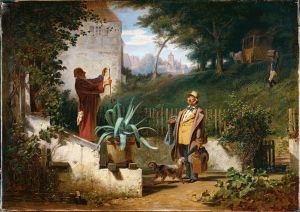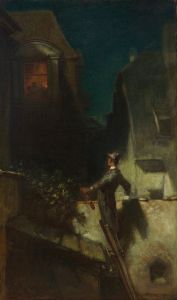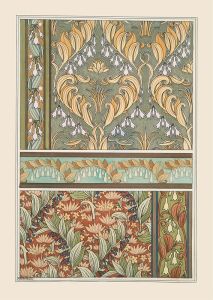
Der Alchimist
A hand-painted replica of Carl Spitzweg’s masterpiece Der Alchimist, meticulously crafted by professional artists to capture the true essence of the original. Each piece is created with museum-quality canvas and rare mineral pigments, carefully painted by experienced artists with delicate brushstrokes and rich, layered colors to perfectly recreate the texture of the original artwork. Unlike machine-printed reproductions, this hand-painted version brings the painting to life, infused with the artist’s emotions and skill in every stroke. Whether for personal collection or home decoration, it instantly elevates the artistic atmosphere of any space.
Carl Spitzweg's painting "Der Alchimist" (The Alchemist) is a notable work by the German Romanticist artist, who is renowned for his humorous and insightful depictions of 19th-century bourgeois life. Spitzweg, born in 1808 in Munich, was initially trained as a pharmacist before turning to painting, which may have influenced his interest in subjects like alchemy and science.
"Der Alchimist" is a quintessential example of Spitzweg's ability to blend humor with a keen observation of human nature. The painting portrays an alchemist, a figure from the Middle Ages and Renaissance who was believed to be capable of transforming base metals into gold and discovering the elixir of life. In the 19th century, when Spitzweg painted this work, alchemy was largely considered a pseudoscience, which adds a layer of irony to the depiction.
In the painting, the alchemist is shown in his cluttered laboratory, surrounded by an array of scientific instruments, flasks, and books. The setting is typical of Spitzweg's attention to detail, capturing the chaotic yet fascinating world of a man absorbed in his quest for knowledge. The alchemist is depicted as an elderly man, deeply engrossed in his work, with a look of intense concentration on his face. This portrayal reflects Spitzweg's characteristic style, which often combines a sense of whimsy with a deeper commentary on the human condition.
Spitzweg's use of light and color in "Der Alchimist" is particularly noteworthy. The warm, golden tones of the painting create a cozy, intimate atmosphere, drawing the viewer into the alchemist's world. The light appears to emanate from the various scientific apparatuses, symbolizing the enlightenment and discovery that the alchemist seeks. This use of light not only highlights the central figure but also adds a sense of magic and wonder to the scene.
The painting is also a reflection of the broader cultural and scientific context of Spitzweg's time. The 19th century was a period of significant scientific advancement and industrialization, and there was a growing interest in the natural sciences. By choosing to depict an alchemist, Spitzweg may have been commenting on the transition from mystical and speculative approaches to a more empirical and rational understanding of the world.
"Der Alchimist" is housed in the Neue Pinakothek in Munich, which holds a significant collection of 19th-century art. The painting remains a popular work, admired for its charm, humor, and insightful portrayal of a bygone era. Spitzweg's ability to capture the eccentricities of his characters, combined with his technical skill, ensures that "Der Alchimist" continues to resonate with audiences today.













